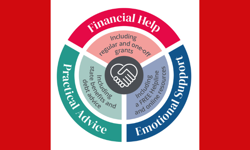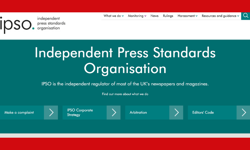The free-versus-paid debate is as old as the web itself, perhaps because the web was developed by optimistic and wide-eyed developers with dreams of a collective (and free) paradise. As the web became more widespread, pre-existing paid content services remained paid and turned their noses up at online opportunities. Free services joined a headlong rush to put their content on to the web. In many cases, paid content owners joined this rush and added their content free. Interestingly, some content providers have continued to this day with the free model, for example the AA Routefinder service. Generally, however, we have seen a slow but steady move towards paid content. So what is the best position? Can content owners justify charging for content?
Online newspapers are a good example of the successful progression to online content. The Financial Times and the Wall Street Journal are two of the world’s most prestigious sources for financial news. The WSJ is reckoned to have one of the largest subscriber bases of any online content resource – getting on for 750,000 subscribers, while the FT has a highly successful model and a news desk that delivers content suitable for both online and print markets (and both circulation and profits at the FT grew in 2006). How did these papers manage this transition from print to a co-ordinated output to print and online operation? By managing the content transition effectively, which means by recognizing that content works under different models and with different opportunities in online forms.
Pricing strategies
When you sell access to print, everything is simple. You can charge per issue, or you can charge for a subscription – that’s about it. But the options for pricing are limited by the restrictions of the channel. You wouldn’t take kindly to standing in the queue at the newsagent’s while the customer in front of you was told about 20 different options for paying for his or her periodical (buy one article, or buy a week’s worth of articles, at normal price, student discount, etc).
But on the web, the situation is different. With prices clearly stated, and with no queue, you can have a proliferation of prices and no problems understanding them. Take EasyJet, for example, where there will be hundreds of different prices for a single flight! The same should apply to your content. Use the power of the web to provide multiple options that enable you to segment your market. Offer your content by article, or by time-based access to an issue or issues.
The shop window and browsing
It’s not just how much to charge; the appropriate point in the information chain where you charge is also very important. For example, Library Journal (from Reed Business Information) is a periodical for librarians, with an extensive archive of several years of book reviews. To find a review, simply access their site and fill in the search box. Click on ‘search’ and you are taken – not to the search results, but to a ‘subscribe now’ message. You are not given the courtesy of learning if LJ contains the content you are looking for. Why don’t they open up the search results so that you know that the periodical contains the bit of content you are looking for? Not only has the user been taken to a dead end, but the same journal then gives only one inflexible way to pay: $260 for an annual subscription, which comprises combined print and online access. There is no option to buy access for a week, or a month. Many users may find the print inconvenient and want only access to the web version. Overall, the online content process shows no development from the world of print – you can buy a subscription, and nothing else. By comparison, the Times Literary Supplement has over ten years of reviews and you can at least see before you subscribe if the book you want is reviewed or not. This is an example of a golden rule of designing for the web: never waste the customer’s time, but turn it into an opportunity. It is perfectly reasonable that a consumer should know what they are getting before they pay, and the way to do that is to show some content for free. By letting the customer search and browse, you are respecting them. The other strategy is as if the newsagent had put wrappers around all magazines in the shop: that strategy probably benefits sales of only one type of magazine.
What value can I add?
There are two simple rules here: first, you can charge for added value, and second, online publishing provides a host of opportunities for adding value to existing content. Publishers, who are employed for their entrepreneurial instinct, nonetheless sometimes have great difficulty in spotting value-add opportunities for the web. Amazon, after all, adds value to books it does not own by inviting users to add reviews and booklists. Its business is to sell books, but it adds value to that process very effectively by creating content of its own. Even if you own none of the content on your site, you can create value, and revenue, for example by a Popularity index. One of the most popular features of IMDB, the movie database, is to see what users have voted for. OK, so popularity may not in itself be chargeable; but searching is. Many periodicals could charge effectively for searching content that has already been delivered.
A small sports newsletter publisher has transformed its business through web publishing. It produces regular online bulletins for sports coaches, delivered by email, that print out to an A4 sheet, with tips on how to run a coaching session. So, given the existing subscriber base, what more could be charged for? The sports publisher can charge for indexing. As a periodical purchaser, you buy the story chosen by the editorial team, not necessarily the story you want. This week they cover defending, while you wanted goalkeeping for your training session this week. Rather than wait for the next time the publisher features his topic, there is a paid archive that is searchable by topic. Here is a clear example of added value that can be charged for in addition to a print subscription. Think of all those back issues of magazines you have lying around – you could find the article you wanted from three months ago, couldn’t you?
What to charge for – and how much to charge
Give away enough content free to make your would-be customers realise there is genuine value here. I’ve shown how a blanket ban on any content has a negative effect. Instead, identify other things you can charge for. The best place to start is to understand what the customer is trying to do with the content they are seeking. Can you help them achieve their goals? Do you know what their goals are? For example, can you provide content faster? Almost certainly. Can you provide it at evenings and weekends? No problem!
One fascinating example of this principle is how content that is free in some contexts can be paid in others. One company I worked for provided consultancy services to the construction industry. We created an online industry update newsletter as a shop window for the consultancy, and then found we could sell this newsletter: the Royal Institute of British Architects paid for the newsletter to be provided free to all its members as a membership benefit.
Another small publisher, producing books entitled Doing Business with…, covering how to trade with Russia, China, Eastern Europe, etc, found that once their content had been digitised, it could be licensed very easily in small chunks to market research companies, who were looking for market reports. Here was one chapter from a book that retails at £75, selling alongside market reports that cost £200. The only change was the context where the content was sold.
Some recommendations
In this brief article, I can’t hope to list more than a few ideas for how content can be sold. But I end with some recommendations for your paid online content:
* Nobody objects to paying for content if they know what they are getting and the rules are clearly stated. I can join ft.com for online access for a month, or for a year, and with three levels of content. So I use the service again and again.
* Make clear to the purchaser where the added value is. This can be searching and archiving (the FT, training plans) or it could be topicality (share prices, recent business deals) for which you can charge a premium. Does the web content solve the customer’s real problem? Then you can charge for it.
* Don’t hide all your content, and don’t give it all away. Find the correct point at which you should begin charging, so your users identify you have a good (and continuing) content base and that it is worth paying for your content.
* Whichever models you adopt for pricing, make sure you analyse usage carefully. The web provides better ways of recording consumption patterns than any former model, so make best use of it to fine-tune your pricing.
* Don’t believe the argument that traffic can be monetized later. Traffic is not worth clinging on to for its own sake. Hoping to pay for everything through advertising may work for Google but their model is unique. The rest of us are content owners and have to make that content pay.
FEATURE
Charging for Online Content
Can you charge for content? Yes, you can - but the challenge is to do it without alienating your customers. Here, Michael Upshall outlines some ideas on how to go about it.










